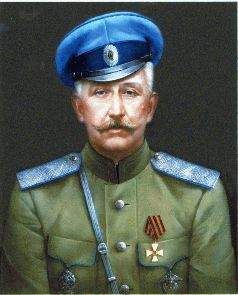10. Aronson, E., amp; Mills, J. (1959). The effect of severity of initiation on liking for agroup. Journal of Abnormal and Social Psychology, 59, 177-181.
11. Aronson, E., amp; Darwyn, L. (1965). Gain and loss of esteem as determinants of interpersonal attractiveness. Journal of Experimental Social Psychology, 1, 156-171. Aronson, E., amp; Worchel, P. (1966). Similarity versus liking as determinants of interpersonal attractiveness. Psychonomic Science, 5, 157-158. Sigall, H., amp; Aronson, E. (1969). Liking for an evaluator as a function of her physical attractiveness and nature of the evaluations. Journal of Experimental Social Psychology, 5, 93-100.
12. Amabile, Т. (1983). Brilliant but cruel: Perceptions of negative evaluators. Journal of Experimental Social Psychology, 19, 146-156.
13. Deutsch, М., amp; Solomon, L. (1959). Reactions to evaluations by others as influenced by self-evaluations. Sociometry, 22, 93-112.
14. Jones, E.E. (1964). Ingratiation. New York: Appleton-Century-Crofts.
15. Jennings, ff.H. (1959). Leadership and isolation (2nd ed.). New York: Longman, Green.
16. Lott, B., amp; Lott, A. (1960). The formation of positive attitudes toward group members. Journal of Abnormal and Social Psychology, 61, 297-300.
17. Brehm, J., amp; Cole, A. (1966). Effect of a favor which reduces freedom. Journal of Personality and Social Psychology, 3, 420-426.
18. Толстой Л. Н. (1863-69). Война и мир. М.: Художественная литература, 1968.
19. Bigelow, J. (Ed.). (1916). The autobiography of Benjamin Franklin (pp. 216- 217). New York: G.P. Putnam's Sons.
20. Jecker, J., amp; Landy, D. (1969). Liking a person as a function of doing him a favor. Human Relations, 22,371-378.
21. Lerner, М., amp; Simmons, С. (1966). Observer's reaction to the ‹innocent victim›: Compassion or rejection? Journal of Personality and Social Psychology, 4, 203-210.
22. Lott, A.J., Lott, B.E., Reed, T., amp; Crow,T. (1960). Personality-trait descriptions of differentially liked persons. Journal of Personality and Social Psychology, 16, 284-290.
23. Bales, R. (1958). Task roles and social roles in problem solving groups. In E.E. Maccoby, T.M. Newcomb, and E.L. Hartley (Eds.), Readings in social psychology (3rd ed., pp. 437-447). New York: Holt. Bales, R., amp; Slater, P. (1955). Role differentiation in small decision-making groups. In T. Parsons and R.F. Bales (Eds.), The family, socialization, and interaction process. Glencoe, IL: Free Press.
24. Aronson, E., Willerman, B., amp; Floyd, J. (1966). The effect of a pratfall on increasing interpersonal attractiveness. Psychonomic Science, 4, 227-228.
25. Deaux, К. (1972). To err is humanizing: But sex makes a difference. Representative Research in Social Psychology, 3, 20-28.
26. Aronson, E., Helmreich, R., amp; LeFan, J. (1970). To err is humanizing - sometimes: Effects of self-esteem, competence, and a pratfall on interpersonal attraction. Journal of Personality and Social Psychology, 16, 259-264.
27. Tesser, A., amp; Brodie, At. (1971). A note on the evaluation of a ‹computer date›. Psychonomic Science, 23,300.
28. Feingold, A. (1990). Gender differences in effects of physical attractiveness on romantic attraction: A comparison across Five research paradigms. Journal of Personality and Social Psychology, 59, 981-993.
29. Walster, Aronson, Abrahams, amp; Rottman, Importance of physical attractiveness.
30. White, G. (1980).Physical attractiveness and courtship progress. Journal of Personality and Social Psychology, 39, 660-668.
31. Dion, К., Berscheid, E., amp; Walsler(Hatfield), E. (1972). What is beautiful is good. Journal of Personality and Social Psychology, 24, 285-290.
32. Tan, A.S. (1979). TV beauty ads and role expectations of adolescent female viewers. Journalism Quarterly, 56, 283-288.
33. Dion, К., amp; Berscheid, Е. (1971). Physical attractiveness and sociometric choice in nursery school children. Mimeographed research report.
34. Dion, K. (1972). Physical attractiveness and evaluation of children's transgressions. Journal of Personality and Social Psychology, 24, 207-213. Похожие результаты сообщаются в: Berkowit^, L., amp; Frodi, А. (1979). Reactions to a child's mistakes as affected by her/his looks and speech. Social Psychology Quarterly, 42, 420-425.
35. Frieze, I.H., Olson, J.E., amp; Russell, J. (1991). Attractiveness and income for men and women in management. Journal of Applied Social Psychology, 21, 1039-1057.
36. Sigall, H., amp; Aronson, Е. (1969). Liking for an evaluator as a function of her physical attractiveness and nature of the evaluations. Journal of Experimental and Social Psychology, 5,93-100.
37. Sigall, H., amp; Ostrove, N. (1975). Beautiful but dangerous: Effects of offender attractiveness and nature of the crime on juridic judgement. Journal ofPersonality and Social Psychology, 31,410-414.
38. Downs, C.A., amp; Lyons, P.M. (1991). Natural observations of the links between attractiveness and initial legal judgements. Personality and Social Psychology Bulletin, 17, 541-547.
39. Sigall, H., amp; Landy, D. (1973). Radiating beauty: Effects of having physical attractive partner on person perception. Journal of Personality and Social Psychology, 28, 218-224.
40. Snyder, M., Tanke, E.D., amp; Berscheid, Е. (1977). Social perception and interpersonal behavior: On the self-fulfilling nature of social stereotypes. Journal of Personality and Social Psychology, 35, 656-666.
41. Byrne, Attitudes and attraction.
42. Rosenbaum, M.E. (1986). The repulsion hypothesis: On the nondevelopment of relationships. Journal of Personality and Social Psychology, 51, 1156-1166.
43. Sigall, H. (1970). The effects of competence and consensu-ll validation on a communicator's liking for the audience. Journal of Personality and Social Psychology, 16, 251-258.
44. Marks, G., Miller, N., amp; Maruyama, M. (1981). Effect of targets' physical attractiveness on assumptions of similarity. Journal of Personality and Social Psychology, 41, 198-206. Granberg, D., amp; King, M. (1980). Crosslagged panel analysis of the relation between attraction and perceived similarity. Journal ofExperimental Social Psychology, 16, 573-581.
45. Aronson, Е., amp; Worchel, S. (1966). Similarity versus liking as determinants of interpersonal attractiveness. Psychometric Science, 5, 157-158. Condon, J. W., amp; Crano, W.D. (1988). Inferred evaluation and the relationship between attitude similarity and interpersonal attraction. Journal of Personality and Social Psychology, 54, 789-797.
46. Secord, P., amp; Backman, C. (1964). Interpersonal congruency, perceived similarity, and friendship. Sociometry, 27, 115-127.
47. Curtis, R.C., amp; Miller, K. (1986). Believing another likes or dislikes you: Behaviors making the beliefs come true. Journal of Personality and Social Psychology, 51, 284-290.
48. Walster (Hatfield), Е. (1965). The effect of self-esteem on romantic liking. Journal of Experimental and Social Psychology, 1, 184-197.
49. Kiesler, S.B., amp; Bora!, R.L. (1970). The search for a romantic partner: The effects of self-esteem and physical attractiveness on romantic behavior. In K.J. Gergen and D. Marlowe (Eds.), Personality and social behavior. Reading, MA: Addison-Wesley.
50. Grube, J., Kleinhesselink, R., amp; Keamey, K. (1982). Male self-acceptance and attraction toward women. Personality and Social Psychology Bulletin, 8, 107-1 12.
51. Van Gorp, G., Stempfle, J., amp; Olson, D. (1973). Dating attitudes, expectations, and physical attractiveness. Unpublished paper, reported in Z. Rubin, Liking and loving: An invitation to social psychology (p. 68). New York: Holt, Rinehart and Winston.
52. Jones, E.E., Bell, L., amp; Aronson, E. (1971). The reciprocation of attraction from similar and dissimilar others: A study in person perception and evaluation. In Experimental social psychology (pp. 142-183). New York: Holt, Rinehart and Winston.
53. Aronson, E., amp; Linder, D. (1965). Gain and loss of esteem as determinants of interpersonal attractiveness. Journal of Experimental and Social Psychology, 7, 156- 171. CM. также: Gerard, H., amp; Greenbaum, С. W. (1962). Attitudes toward an agent of uncertainty reduction. Journal of Personality, 30, 485-495. Mettee, D., Taylor, S.E., amp; Friedman, H. (1973). Affect conversion and the gain-loss like effect, Sociometry, 36, 505-519. Aronson, E., amp; Mettee, D. (1974). Affective reactions to appraisal from others. In Foundations of interpersonal attraction. New York: Academic Press. Clore, G.L., Wiggins, N.H., amp; ltkin, S. (1975). Gain and loss in attraction: Attributions from nonverbal behavior. Journal of Personality and Social Psychology, 31, 706-712.
54. Ibid.
55. Spinoza, В. de (1910). The ethics. In A. Boyle (Trans.), Spinoza's ethics and ‹De Intellectus Emendatione›. New York: Dutton. Рус. пер. - Спиноза Б. Этика. Введение в основания нравственности и законодательства//Избр. произв. Т. 1. М.: Госполитиздат. 1957.
56. Mettee, D.R., Taylor, S.E., amp; Friedman, H. (1973). Affect conversion and the gain-loss like effect. Sociometry, 36, 505-519.
57. Mettee, D.R., amp; Aronson, E. (1974). Affective reactions to appraisal from others. Foundations of interpersonal attraction. New York: Academic Press.
58. Winch, R. (1958). Mate selection: A study of complementary needs. New York: Harper amp; Row.
59. Berscheid, E. (1985). Interpersonal attraction. In G. Lindzey and E. Aronson (Eds.), Handbook of social psychology (3rd ed., pp. 413-484). Reading, MA: Addison-Wesley. Berscheid, E., amp; Walster(Hatfield), E. (1978). Interpersonal attraction. Reading, MA: Addison-Wesley. Kendel, D. (1978). Similarity in real-life adolescent friendship pairs.Joumal of Personality and Social Psychology,36, 306- 312. Nias.D.K.B. (1979). Marital choice: Matching or complementation? In М. Cook and G. Wilson (Eds.), Love and attraction. Oxford: Pergamon. Fishbein, D., amp; Thelen, M.H. (1981). Husband-wife similarity and marital satisfaction: A different approach. Paper presented at the convention of Midwestern Psychological Association.
60. Rubin, Z. (1970). Measurement of romantic love. Journal of Personality and Social Psychology, 16,265-273.
61. Rubin, Z. (1973). Liking and loving: An invitation to social psychology. New York: Holt, Rinehart and Winston.
62. Walster (Hatfield), E., amp; Walster, B. W. (1978). A new look at love. Reading, MA: Addison-Wesley.
63. Brehm, S. (1985). Intimate re!afionships.'Nev/ York: Random House.
64. dark, M.S., amp; Mills, J. (1979). Interpersonal attraction in exchange and communal relationships. Journal ofPersonality and Social Psychology, 37, 12- 24. Mills, J., amp; Clark.M.S. (1982).Exchange and communal relationships.In L.Wheeler (Ed.), Review of personality and social psychology (o. III). Beverly Hills, CA: Sage. dark, M.S. (1986).Evidence for the effectiveness of manipulations of desire for communal versus exchange relationships. Personality and Social Psychology Bulletin, 12, 425.
65. Walster, E., Walster, G.W., amp; Traupmann, J. (1979). Equity and premarital sex. In M. Cook and G. Wilson (Eds.), Love and attraction. New York: Pergamon Press. Schafer, R.B., amp; Keith, P.M. (1980). Equity and depression among married couples. Social Psychology Quarterly, 43, 430-43 5.
66. dark, M.S., Mills, J.R., amp; Corcoran, D.M. (1989). Keeping track of needs and inputs of friends and strangers. Personality and Social Psychology Bulletin, 15, 533-542.
67. Duck, S. (1995). Strategems, spoils and a serpent's tooth: On the delights and dilemmas of personal relationships. In W.R. Cupach and B.H. Spitzberg (Eds.), The darkside of interpersonal communication. Hilisdale, NJ: Eribaum.
68. Harvey, O.J. (1962). Personality factors in resolution of conceptual incongruities. Sociometry, 25,336-352.
69. Stevenson, H., Keen, R., amp; Knights, J. (1963). Parents and strangers as reinforcing agents for children's performance. Journal of Abnormal and Social Psychology, 67, 183-185.
70. Floyd, J. (1964). Effects of amount of reward and friendship status of the other on the frequency of sharing in children. Unpublished Ph.D. dissertation, University of Minnesota.
71. Cicero (46 г. до н.э.). De amicitia. Libri Sapientis: Horti Novabaculae, Roma. Рус. пер. - Цицерон Марк Туллий. О дружбе. В кн.: Цицерон. О старости, о дружбе, об обязанностях. М.: Наука. 1957.
72. Harvey, J.H., Weber, A.L., amp; Orbuch, T.L. (1990). Interpersonal accounts: A social psychological perspective. Oxford: Blackwell.
73. Rands, M., Levinger, G., amp; Mellinger, G. (1981). Patterns of conflict resolution and marital satisfaction. Journal of Family Issues, 2, 297-321.
74. Skotko, P.К. (1981). The relation between interpersonal attraction and measures of self-disclosure. Journal of Social Psychology, 72, 311- 312. Archer, R., amp; Burle-son,J. (1980).The effects of timing of self-disclosure on attraction and reciprocity. Journal of Personality and Social Psychology, 38, 120-130. Taylor, D., Gould, R., amp; Brounstein, P. (1981). Effects of personalistic self-disclosure. Personality and Social Psychology Bulletin, 7,437-492. IS.Kahn, M. (1971). Sensitivity training at Kresge College. Unpublished manuscript.



